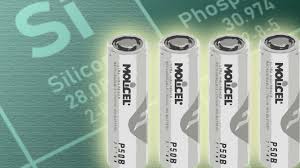
Breaking News
 Flock Camera Update: How Arch-Technocrats Are Scamming Your Tax Dollars, Stealing Your Data...
Flock Camera Update: How Arch-Technocrats Are Scamming Your Tax Dollars, Stealing Your Data...
 Lab-Grown Milk: 'Real Milk' Without Cows?
Lab-Grown Milk: 'Real Milk' Without Cows?
 Watch NASA unveil new images of interstellar comet 3I/ATLAS live today. Here's how
Watch NASA unveil new images of interstellar comet 3I/ATLAS live today. Here's how
 Thomas Massie: The Greatest American Hero
Thomas Massie: The Greatest American Hero
Top Tech News
 New Gel Regrows Dental Enamel–Which Humans Cannot Do–and Could Revolutionize Tooth Care
New Gel Regrows Dental Enamel–Which Humans Cannot Do–and Could Revolutionize Tooth Care
 Researchers want to drop lab grown brains into video games
Researchers want to drop lab grown brains into video games
 Scientists achieve breakthrough in Quantum satellite uplink
Scientists achieve breakthrough in Quantum satellite uplink
 Blue Origin New Glenn 2 Next Launch and How Many Launches in 2026 and 2027
Blue Origin New Glenn 2 Next Launch and How Many Launches in 2026 and 2027
 China's thorium reactor aims to fuse power and parity
China's thorium reactor aims to fuse power and parity
 Ancient way to create penicillin, a medicine from ancient era
Ancient way to create penicillin, a medicine from ancient era
 Goodbye, Cavities? Scientists Just Found a Way to Regrow Tooth Enamel
Goodbye, Cavities? Scientists Just Found a Way to Regrow Tooth Enamel
 Scientists Say They've Figured Out How to Transcribe Your Thoughts From an MRI Scan
Scientists Say They've Figured Out How to Transcribe Your Thoughts From an MRI Scan
 Calling Dr. Grok. Can AI Do Better than Your Primary Physician?
Calling Dr. Grok. Can AI Do Better than Your Primary Physician?
New silicon anodes boost lithium batteries' energy density by 250% for future EVs

Scientists in Germany have just unveiled a new class of fiber-based silicon anodes that could significantly increase the energy density of lithium-ion (Li-ion) batteries by up to 250 percent.
The technology, developed at the Center for Solar Energy and Hydrogen Research Baden-Württemberg (ZSW), has the potential to reshape battery performance for electric vehicles (EVs) consumer electronics and renewable energy storage.
Known as FACILE, the project also brings together regional partners including ISC Konstanz, Phoenix NonWoven GmbH & Co. KG and mechanical engineering firm centrotherm international AG.
"FACILE shows how industry and science in Baden-Württemberg can jointly cover the entire value chain for lithium-ion batteries, from material development to cell production," Markus Hölzle, PhD, ZSW managing board member, stated.
Reinventing Li-ion cells
Conventional lithium-ion cells typically use graphite for their anodes, the battery's negative electrode. But graphite, which is the crystalline form of carbon, can store only about 370 milliampere-hours (mAh) of lithium per gram.
This storage limit has long constrained how much energy today's batteries can hold. Silicon (Si), on the other hand, can theoretically hold up to 4,200 mAh per gram. This corresponds to more than 10 times the capacity of graphite.
With silicon and graphite costing roughly the same, silicon offers a promising solution to affordable, high-energy batteries. However, when silicon absorbs lithium, it expands up to 300 percent.
This expansion causes cracking, layer delamination and rapid battery failure. Over the past decade, researchers have tried nanostructures, thin films and composite blends, but scaling these approaches for mass production still poses a challenge.

 Unbanked In A Connected World
Unbanked In A Connected World

